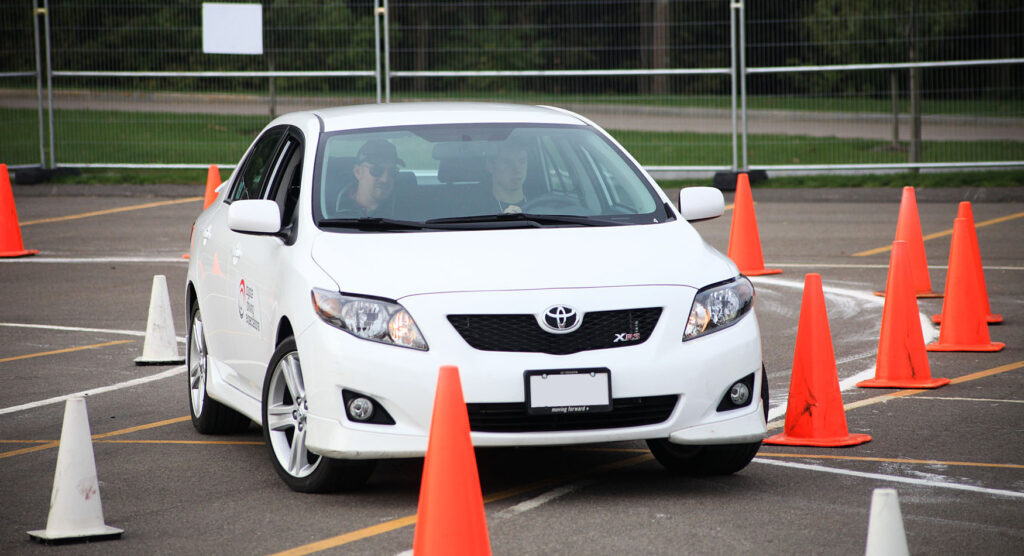
- Ohio saw 97 fatal crashes involving teens in 2024 with 67 at fault.
- 58 percent of fatal teen crashes involved drivers aged 18 or 19.
- Drivers aged 18 to 20 must now complete full driver education.
Last year, in Ohio there were 97 fatal crashes involving at least one teen driver. In 67 of them, investigations found a teen to be at fault for the accident. In an effort to improve safety, the state is changing a law surrounding driver’s license eligibility. In the past, anyone over 18 could opt out of driver’s education. Now, they’ll have to take it if they’re under 21.
var adpushup = window.adpushup = window.adpushup || {que:[]};
adpushup.que.push(function() {
if (adpushup.config.platform !== “DESKTOP”){
adpushup.triggerAd(“0f7e3106-c4d6-4db4-8135-c508879a76f8”);
} else {
adpushup.triggerAd(“82503191-e1d1-435a-874f-9c78a2a54a2f”);
}
});
As the law stood beforehand, anyone under 18 had to complete driver’s education before getting a license. That included 24 hours of classroom or online lessons, eight hours of real-world driving with an instructor, 50 hours of driving with a parent or guardian, including 10 hours at night, and the holding of a temporary license of at least six months.
Read: Clown Fish Orange M5 Shows Color Can Be A Criminal’s Biggest Mistake
On the flip side, drivers over the age of 18 could simply pass a driving test to get their license. If they failed the test, they’d have to complete a four-hour course and get some training with an instructor. That vast difference in education appears to be showing up in crash data too: 58 percent of fatal accidents involving a teen in 2024 included a driver who was 18 to 19 years old.
Stricter Rules, Same Curriculum
To the state, it sees this as an opportunity to improve safety through training. Now, everyone under 21 will have to go through the same stringent education mentioned above. The new requirements go into effect immediately.
“We know that young people who go through driver’s training become safer drivers − safer for themselves and safer for everyone else on the road,” said Governor Mike DeWine, according to the Dispatch. “And that’s not just true for young people. It’s true for adults.”

Training Quality Still a Question
It’s worth noting that the new law, while clearly aimed at safety, doesn’t account for every scenario. For example, just 34 percent of the at-fault teens involved in a fatal accident didn’t have a record of driver’s education. That means that two-thirds did have driver’s ed. Another 13 percent didn’t have a license at all.
var adpushup = window.adpushup = window.adpushup || {que:[]};
adpushup.que.push(function() {
if (adpushup.config.platform !== “DESKTOP”){
adpushup.triggerAd(“bb7964e9-07de-4b06-a83e-ead35079d53c”);
} else {
adpushup.triggerAd(“9b1169d9-7a89-4971-a77f-1397f7588751”);
}
});
Despite that, the new law does nothing for improving training itself; it simply requires more drivers to get trained. No doubt, additional training is great, but the quality of that education also plays a great role in drivers learning how to avoid making mistakes that can, if things go very wrong, have a horrible outcome.
var adpushup = window.adpushup = window.adpushup || {que:[]};
adpushup.que.push(function() {
if (adpushup.config.platform !== “DESKTOP”){
adpushup.triggerAd(“bb7964e9-07de-4b06-a83e-ead35079d53c”);
} else {
adpushup.triggerAd(“9b1169d9-7a89-4971-a77f-1397f7588751”);
}
});